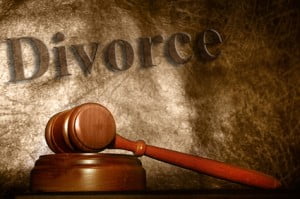 Dividing assets, especially retirement benefits, in a divorce can be frustrating and complicated. Many individuals spend years saving for their post-work life and when marriages do not work out, they stand to lose a substantial amount of their retirement money. With a record number of people filing for divorce at 50 years of age or older and many of these individuals having retirement benefits, it is important to fully understand how these assets are handled in the case of splitting property during a divorce.
Dividing assets, especially retirement benefits, in a divorce can be frustrating and complicated. Many individuals spend years saving for their post-work life and when marriages do not work out, they stand to lose a substantial amount of their retirement money. With a record number of people filing for divorce at 50 years of age or older and many of these individuals having retirement benefits, it is important to fully understand how these assets are handled in the case of splitting property during a divorce.
According to a 2012 study published in The Wall Street Journal, one in every four Americans who is filing for divorce is at least 50 years old. This is a dramatic increase from a similar study done in 1990, where less than one in every ten 50 year old Americans was divorcing. Considering that retirement plans account for a large portion of the assets that Americans hold in this particular age bracket, it comes as no surprise that how these benefits are divided comes as a point of contention during many divorces.
The right of one former spouse to the retirement benefits of the other has been established with the Qualified Domestic Relations Order or QDRO. Additionally, this order protects the owner of the retirement benefits from having to pay penalties for early withdrawal and income taxes on retirement assets that may be transferred to the other spouse during the divorce. Couples are encouraged to split the retirement account as they see fit, but if they cannot reach an agreement, the court will step in.
During the divorce proceeding, an attorney will be responsible for preparing and submitting the QDRO and once it is approved by the court, it will then be passed on to the 401(k) plan administrator. This QDRO will outline the calculations needed to divide the retirement assets between the two parties in the divorce. It will also include whether or not each spouse is entitled to a percentage or a dollar amount of the retirement benefits and will outline how the parties will share investment gains and losses.
In some cases, a family law attorney will suggest that the QDRO include a stipulation that the owner of the retirement account cannot make withdrawals or transfers from the account until the assets have been split between the two parties. This helps to prevent the account owner from draining the assets from the account so the spouse will not receive any of the funds. If a QDRO becomes effective before the owner retires, the non-owning spouse may be awarded a separate interest to ensure payment.
As with many divorce proceedings, it is always suggested that both parties obtain legal counsel to help sort out the complex nature of 401(k) benefits. This will help to guarantee that the owner of the account is not taken advantage of by the other party and also helps to ensure that the non-owner is granted the benefits that he or she deserves. Although each spouse may be living separately, having legal representation helps to assure they both receive the benefits they need to make their retirement comfortable.
